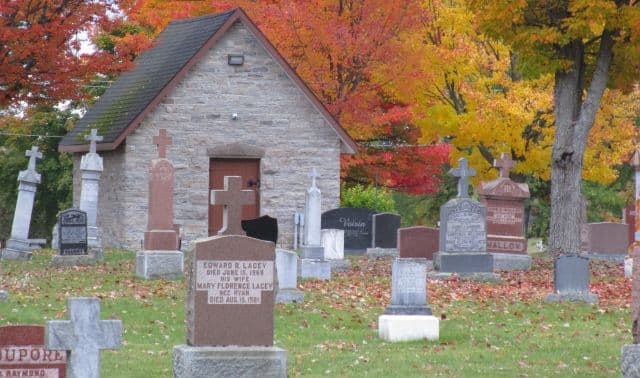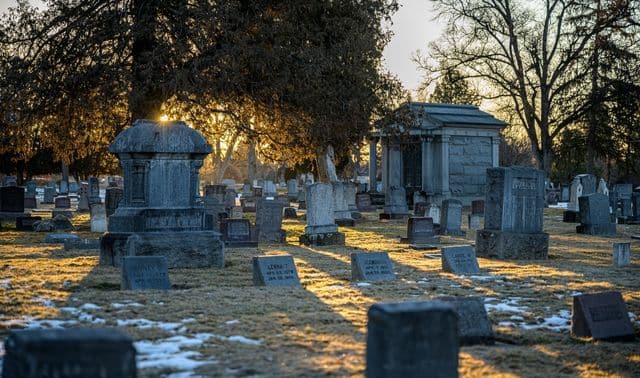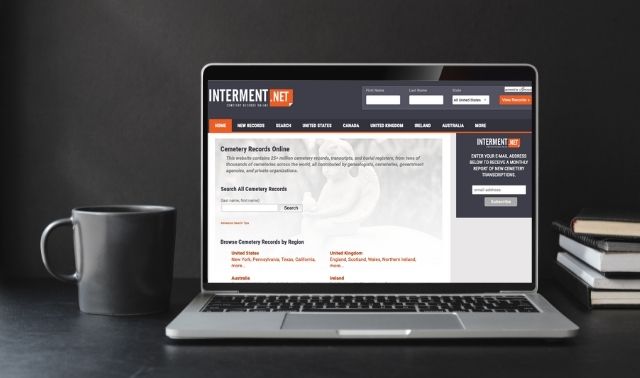Most family historians have known the joy of finally finding an ancestor’s burial site, only to have their joy dampened by an unreadable inscription. Or a sparing one that reduces your ancestor’s life to mere birth and death dates. How many times have you wished a tombstone could talk to you—or even better, show you photos, videos and life stories of your deceased relative?
Cemeteries don’t often see technological advances (there are only so many ways to inter a body), but technology is helping to solve an age-old problem: how to share important life details about the dearly departed in a limited space that’s also exposed to all manner of weather.
Quick Response (QR) codes can provide a solution. Even if you’ve never used a QR code, you’ve probably seen one. These patterned black-and-white squares are showing up on advertisements, business cards, store shelves, signs, packaging and more.
Created in 1994 by Denso Wave for the automobile industry, a QR code is a matrix or two-dimensional barcode whose contents can be decoded at high speed. Think of it as the younger, smarter brother of a UPC code. QR codes are more user-friendly and typically readable even if damaged. And they hold lots of data: Scan one with a smartphone equipped with a QR code reader app (such as ScanLife for Android or iPhone) to access information about the product, person or event—typically, a video, coupon or web page.
Now, the QR code is a sort of graveside storyteller. Glenn Toothman III, CEO of Memory Medallion, was a district attorney when his 79-year-old father showed up unexpectedly at his office one morning. “He told me he’d spent the last several days in the cemetery visiting family. He said, ‘As I come into the twilight of my life I hate to think that all that’ll be left of our family is the dash between the dates of birth and death. Please make sure the family history lives on so we can all stay connected.’”
The directive was a little overwhelming. Still, Toothman says, “I knew how much this meant to my dad.”
The growing use of mobile computing devices and the spread of QR code technology pointed to bar coding.
Scanning a QR code in a cemetery could take the user to an online burial database or a website about the person or family. Visitors who don’t have smartphones can photograph a QR code and download it to a PC for reading.
Within a month and a half of his dad’s surprise visit, Toothman had a functioning prototype of the Memory Medallion, a 1½ inch stainless steel disc with a laser-etched QR code. He started the company in 2001, charging
from $99 to $199 for a medallion and the service that goes along with it. “It allows for interactive remembrance and memorialization at graveyards, mausoleums—really, anywhere,” Toothman says.
When cemetery visitors scan the code, they can access information already provided by the client. That can include unlimited written content, up to 999 images of photos or documents, five videos, and links to online family trees. A password allows the client to change the information included on the medallion, for example, to honor an anniversary or other special occasion. You could even be prepared by purchasing a QR code for your own future tombstone and assembling the biography you want survivors to be left with.
Other companies are using the technology in similar fashion. Utah-based Stories in Stone offers QR code tiles in vinyl, porcelain, aluminum or glass, with a setup fee under $50 plus a cost for changing the stored data. Customers can opt for a flat lifetime fee or an annual subscription to keep the code active. “If a customer lets a subscription lapse, a person scanning the code will be taken to a page with information for reactivating the code,” explains Dean Anderson, president of Stories in Stone. “Descendants can keep the stories alive, even if the original customer passes away.”
Shannon Berry and her husband started Lifetime Lookback in Burlington, Ky., after wishing his mother’s gravestone could provide a “multidimensional experience.” They charge a flat $129 for a Tribute Tag and hosting content about the deceased. The tag affixed to Janis Berry’s headstone allows access to a Tribute Page with a biography and audio recordings of her singing.
Most QR code emblems come with a strong adhesive backing you can stick onto a monument. Applying all-weather caulk around the edge helps maintain the seal. You also can have a monument company embed it flush with the stone. Family Tree Magazine recommends first contacting the cemetery office or caretaker about any regulations governing attachments to headstones.
Toothman estimates Memory Medallions has sold nearly 10,000 medallions since 2010. Most are on tombstones or mausoleums, but others are affixed to historical monuments or significant buildings. “It’s never been about the money or the business,” says Toothman, whose father lived long enough to see the Memory Medallion invented. “The mission is about finding an affordable and easy way to help people remember.”
From the December 2012 issue of Family Tree Magazine




